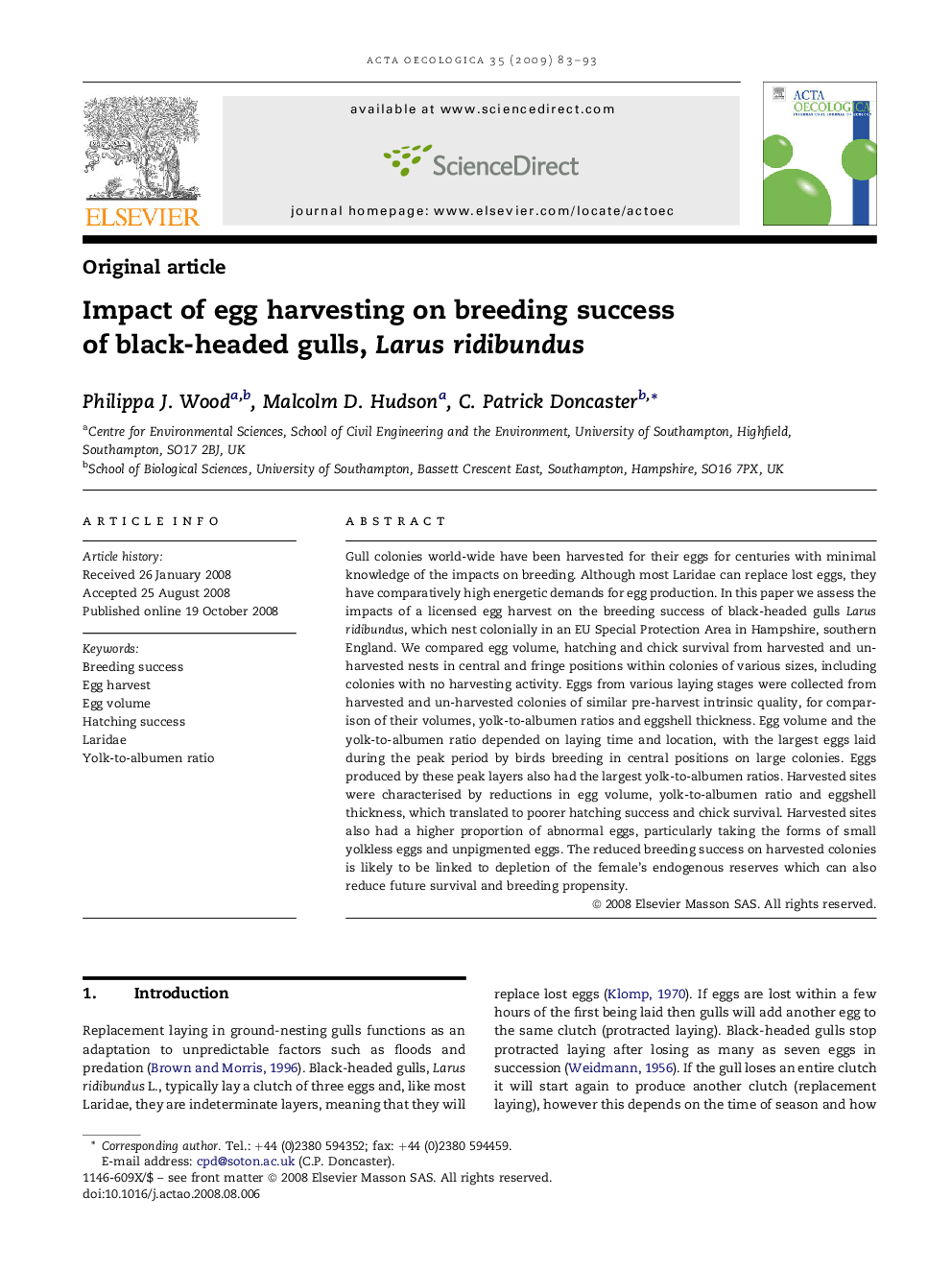| Article ID | Journal | Published Year | Pages | File Type |
|---|---|---|---|---|
| 4381390 | Acta Oecologica | 2009 | 11 Pages |
Gull colonies world-wide have been harvested for their eggs for centuries with minimal knowledge of the impacts on breeding. Although most Laridae can replace lost eggs, they have comparatively high energetic demands for egg production. In this paper we assess the impacts of a licensed egg harvest on the breeding success of black-headed gulls Larus ridibundus, which nest colonially in an EU Special Protection Area in Hampshire, southern England. We compared egg volume, hatching and chick survival from harvested and un-harvested nests in central and fringe positions within colonies of various sizes, including colonies with no harvesting activity. Eggs from various laying stages were collected from harvested and un-harvested colonies of similar pre-harvest intrinsic quality, for comparison of their volumes, yolk-to-albumen ratios and eggshell thickness. Egg volume and the yolk-to-albumen ratio depended on laying time and location, with the largest eggs laid during the peak period by birds breeding in central positions on large colonies. Eggs produced by these peak layers also had the largest yolk-to-albumen ratios. Harvested sites were characterised by reductions in egg volume, yolk-to-albumen ratio and eggshell thickness, which translated to poorer hatching success and chick survival. Harvested sites also had a higher proportion of abnormal eggs, particularly taking the forms of small yolkless eggs and unpigmented eggs. The reduced breeding success on harvested colonies is likely to be linked to depletion of the female's endogenous reserves which can also reduce future survival and breeding propensity.
